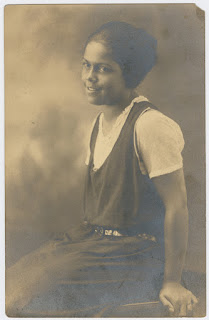One of my frustrations is the celebration of certain marginalized groups
that last for the day and then disappear.
Martin Luther King Jr Day was January 17th. Many of us have gone on
with their lives. Instead of dedicating one post to honoring Zora Neale
Hurston, I wanted to continue this month with discussing other aspects of
African American literature. Today's blog will focus on one of the epic eras of African American creativity, the Harlem Renaissance.
Many people have heard of the Harlem Renaissance but don't quite understand
it. One of my goals with my blog and my other social media platforms is
to help readers learn about literature as well as the historical contexts that
contributed to their creation. I want you, my readers, to not see
literary works as only for snobs but to have the confidence and the
open-mindedness to read these great works yourselves. Books have
changed my life-- and continue to do so. I know they can for you too.
But back to learning about the Harlem Renaissance. For more detailed
information, please see links at the end of this.
TIME PERIOD:
Around 1918-1937 with the height of the movement around the 1920s. Though
the movement struggled during the Great Depression, it did continue though some
consider Arna Bontemps’s debut novel, God Sends
Sunday (1931) the last of the movement.
BACKGROUND:
According to historians, one of the factors that contributed to the
development of the Harlem Renaissance was the Great Migration—when
African-Americans moved from rural settings to urban ones and also transitioned
from southern geographic locations to northern ones. Chicago is one such example as is New York
City.
While the renaissance did not just take place in the Harlem district of New
York, Harlem was considered its spiritual capital.
SIGNIFICANCE:
Considered one of the most important influential movements in African
American literary history. We see the
rise of not just works in literature, but visual arts, theatrical arts,
music. Sought to rethink, express and
challenge black stereotypes of the time.
ARTISTS:
Some of the key artists of this cultural awakening: Zora Neale Hurston, Langston Hughes, Countee
Cullen, Paul Robeson.
Great jazz musicians who often played in Harlem include Louis Armstrong,
Duke Ellington, Bessie Smith, Fats Waller and Cab Calloway
HARLEM RENAISSANCE ENDS:
Many scholars point to the stock market crash of 1929 and the Great
Depression that followed as the start of the end of the Harlem
Renaissance. Many Harlem residents began
to leave the area in 1935 to seek out work and other opportunities.
SPECIAL ACKNOWLEDGEMENT:
Women who identify as black or African-American faced and continue to face
the dual challenges of race and gender.
When I was an undergraduate at Smith College, I remember being frustrated
and angry that it was men who dominated our history books and the literature we
were reading. I promised myself that as
a writer, I would always make room to acknowledge and highlight female
writers.
The following is a list of some of the outstanding female writers of the
Harlem Renaissance:
Gwendolyn B. Bennett (1902-1981)
Marita Bonner (1899-1971)
Jessie Redmon Fauset (1882-1961)
Angelina Weld Grimké (1880-1958)
Georgie Douglas Johnson (1880-1966)
FOR ADDITIONAL READING:
The following links will provide some additional information:
https://www.history.com/topics/roaring-twenties/harlem-renaissance
Enjoy learning and reading about this amazing and important literary era!
Your Friend,
Dina

Comments
Post a Comment